From street corners to prison cells, gangs have been a part of human society for centuries. They have often been associated with violence, criminal activity, and a sense of loyalty to their members. But did you know that some gangs have a history that spans hundreds of years?
This article will explore the world’s oldest gangs, their origins, and how they have evolved over time. Despite the efforts of law enforcement agencies to eradicate them, these gangs continue to thrive in many parts of the world, with new generations of members carrying on their legacies.
Join us as we explore the history and impact of some of the world’s oldest and most notorious gangs.
12. Russian Bratva
Year Established: 1980s
Geographical Origin: Moscow, Russia
Founder: Sergei “Mikhas” Mikhailov
Type of Gang: Criminal Group

The Russian Bratva, also known as the Russian Mafia, is a criminal organization that originated in the Soviet Union in the early 1980s. The term “Bratva” is a Russian word that means “brotherhood,” and it refers to the close-knit structure of the organization.
The roots of the Russian Bratva can be traced back to the Soviet Union’s black market, which thrived due to shortages of basic goods and services. The collapse of the Soviet Union in 1991 provided new opportunities for criminal organizations as the country struggled to adapt to a market economy.
Did You Know?
In the chaos of the post-Soviet era, the Russian Bratva quickly emerged as a major player in the country’s criminal underworld. They were involved in various criminal activities, including extortion, drug trafficking, and arms dealing.
11. The Piru Street Boys
Year Established: 1969
Geographical Origin: California, United States
Founder: Sylvester Puddin Scott, Vincent Benson Owens
Type of Gang: Street Gang
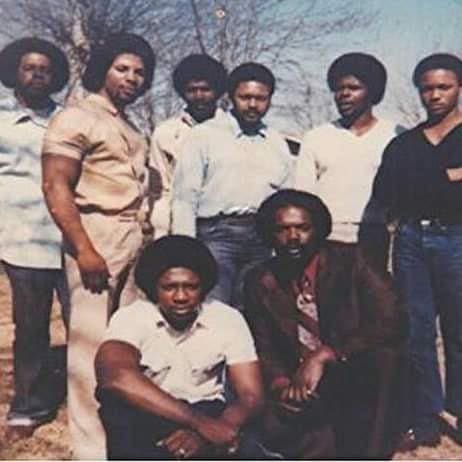
The Piru Street Boys was a street gang founded in the early 1970s in Compton, California. The gang was formed by a group of African-American youths who lived on Piru Street, a small street in Compton.
The Piru Street Boys were among the first gangs to adopt the red bandana as a symbol of their affiliation, a practice later adopted by other Bloods gangs. The gang quickly grew in size and influence, and by the mid-1970s, it had become one of the most powerful gangs in Compton.
In 1972, a member of the Piru Street Boys named Tookie Williams and Raymond Washington, the founder of the Crips, established a truce between the two gangs. The truce was short-lived, however, and by the late 1970s, the Piru Street Boys had become bitter rivals of the Crips.
Did You Know?
In the 1980s, the Piru Street Boys became one of the founding members of the Bloods, a loose confederation of African-American street gangs that had banded together to oppose the Crips.
10. The Hells Angels
Year Established: 1948
Geographical Origin: California, United States
Founder: Sonny Barger
Type of Gang: Motorcycle Gang
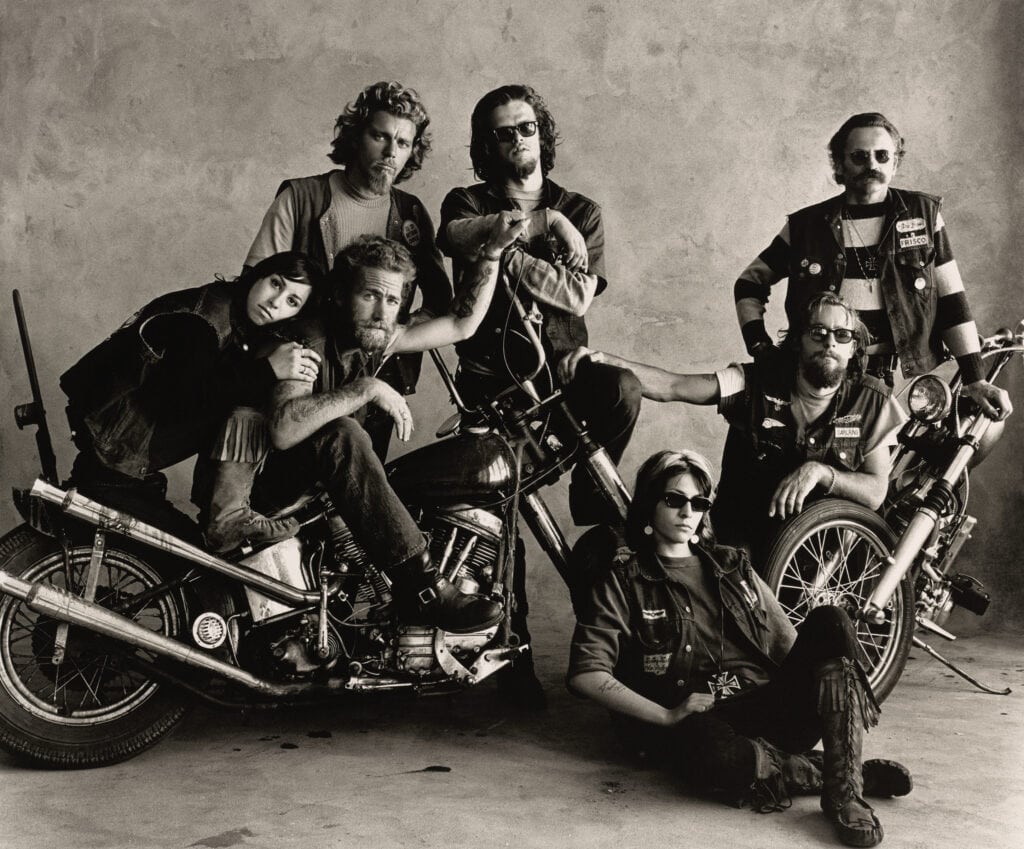
The Hells Angels is a notorious outlaw motorcycle club founded in California in 1948. World War II veterans, including the famous biker Ralph “Sonny” Barger, established the club. Initially, the club was named the “Pissed Off Bastards of Bloomington,” but the name was changed to the Hells Angels shortly after.
The Hells Angels quickly gained notoriety for their outlaw lifestyle, which included drug trafficking, violence, and other criminal activities. Over the years, the club has expanded its operations to other parts of the world, including Europe, Australia, and Canada. The club has also been linked to various other acts of violence, including drug-related murders, extortion, and racketeering.
Did You Know?
The Hells Angels have been involved in numerous high-profile incidents and conflicts, including the infamous “Altamont Speedway Free Festival” in 1969, where a Hells Angel member was filmed killing a concertgoer.
9. La bande à Bonnot
Year Established: 1912
Geographical Origin: France
Founder: Jules Bonnot
Type of Gang: Criminal Anarchist Group
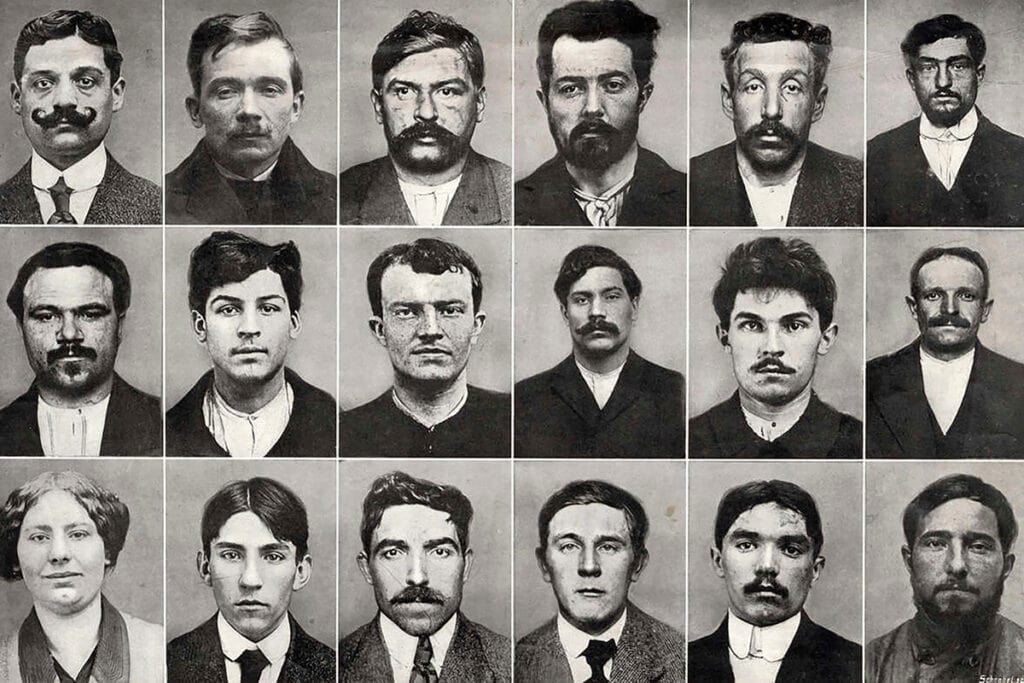
La Bande à Bonnot, or the Bonnot Gang, was a group of French illegalists who committed daring robberies and murders in the early 20th century. The gang was active from 1911 to 1912 and was led by Jules Bonnot, a former soldier and auto mechanic.
The Bonnot Gang was unique in its use of automobiles as getaway vehicles and in the fact that its members were anarchists who believed in direct action to achieve political and social change. The gang’s robberies and murders were seen as a rebellion against the capitalist system and the oppressive state. The gang’s activities soon caught the attention of the police, who launched a massive manhunt for the group.
After several shootouts and a lengthy standoff, the police finally captured and killed most of the gang’s members, including Bonnot. The Bonnot Gang’s legacy has lived on in popular culture, inspiring books, films, and songs and symbolizing anarchist resistance against the state.
Did You Know?
The Bonnot Gang’s most notorious robbery was the theft of a government-owned armored car in 1911, which they used to rob a bank.
8. The Black Hand
Year Established: 1911
Geographical Origin: Serbia
Founder: Col. Dragutin Dimitrijević
Type of Gang: Organized Crime
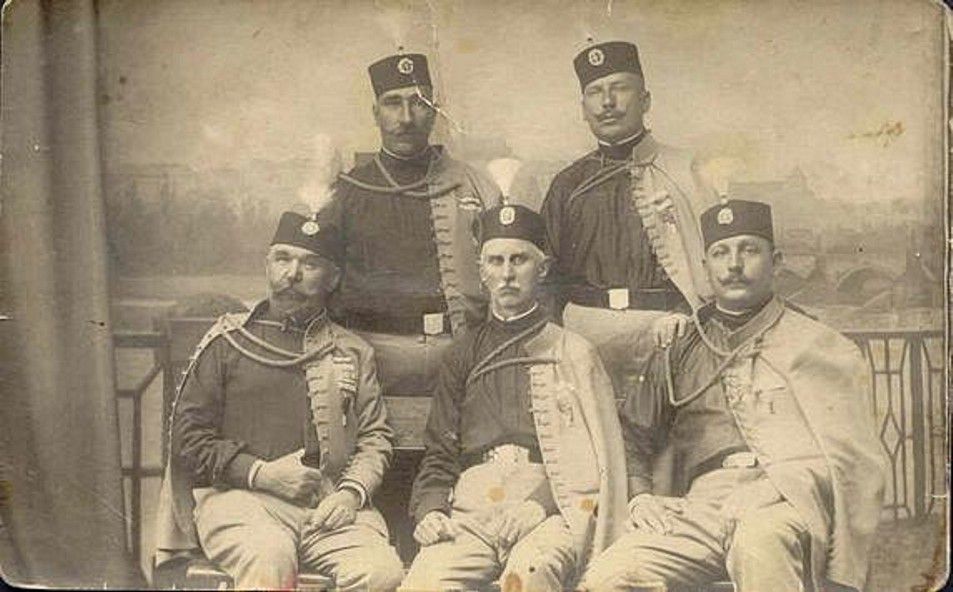
The Black Hand gang was a notorious criminal organization in the United States during the late 19th and early 20th centuries. Its members were primarily army officers with some government officials. Using terrorist methods, the society conducted propaganda campaigns, organized armed bands in Macedonia, and established a network of revolutionary cells throughout Bosnia.
However, the society became so powerful that its authority challenged that of the government, which resulted in Prince Alexander bringing the leaders of the Black Hand to trial on dubious charges at Salonika in 1917. Dimitrijević and two others were executed, and more than 200 were imprisoned.
Did You Know?
The group used terrorist methods, such as bombings and assassinations, to achieve their goals.
7. Wild Bunch
Year Established: 1896
Geographical Origin: Wyoming, United States
Founder: Butch Cassidy
Type of Gang: Outlaw Gang
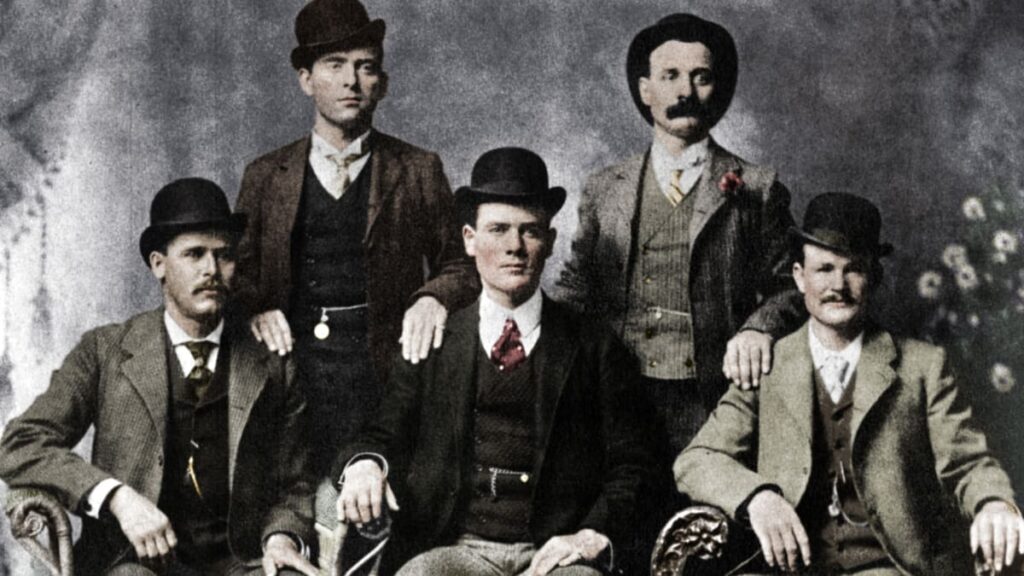
The Wild Bunch gang, led by the infamous outlaw Butch Cassidy, was a collection of cowboy outlaws that operated in the western United States during the late 19th century. Established in 1896 in Wyoming, the gang became known for its daring robberies of banks, trains, and paymasters throughout the region.
The Wild Bunch operated out of several hideouts, including Hole in the Wall, Brown’s Hole, Robbers’ Roost, and the Wilson W.S. Ranch. These remote locations provided the perfect cover for the gang’s criminal activities, and rustled horses and cattle could be grazed at Hole in the Wall and Brown’s Hole.
Did You Know?
Despite their reputation as an organized gang, the Wild Bunch was a loose collection of individual outlaws who would pair off or group up for specific robberies or rustling operations.
6. Cochise Cowboy Gang
Year Established: 1870s
Geographical Origin: Arizona, United States
Founder: Frank and Tom McLaury
Type of Gang: Outlaw Gang
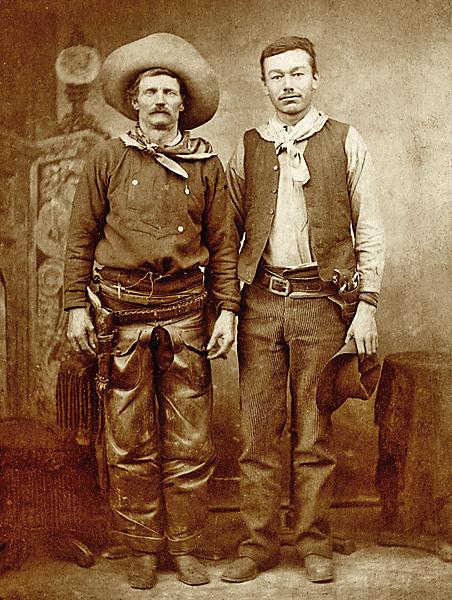
The Cochise Cowboy Gang is a criminal organization based in Arizona, in the southwestern United States. The gang’s primary focus is drug trafficking, particularly the distribution of methamphetamine, cocaine, and marijuana. Members of the Cochise Cowboy Gang have been known to use extreme violence to protect their drug turf, including murder, assault, and intimidation.
Despite its relatively small size, the Cochise Cowboy Gang has established a significant presence in the region, with members operating in various towns and cities throughout Cochise County. The gang has been known to collaborate with other criminal organizations, including Mexican drug cartels.
Did You Know?
The gang’s tight-knit structure and code of silence have made it difficult for authorities to penetrate its inner workings.
5. Apaches
Year Established: 1874
Geographical Origin: Paris, France
Founder: Unknown
Type of Gang: Semi-Organized Gang
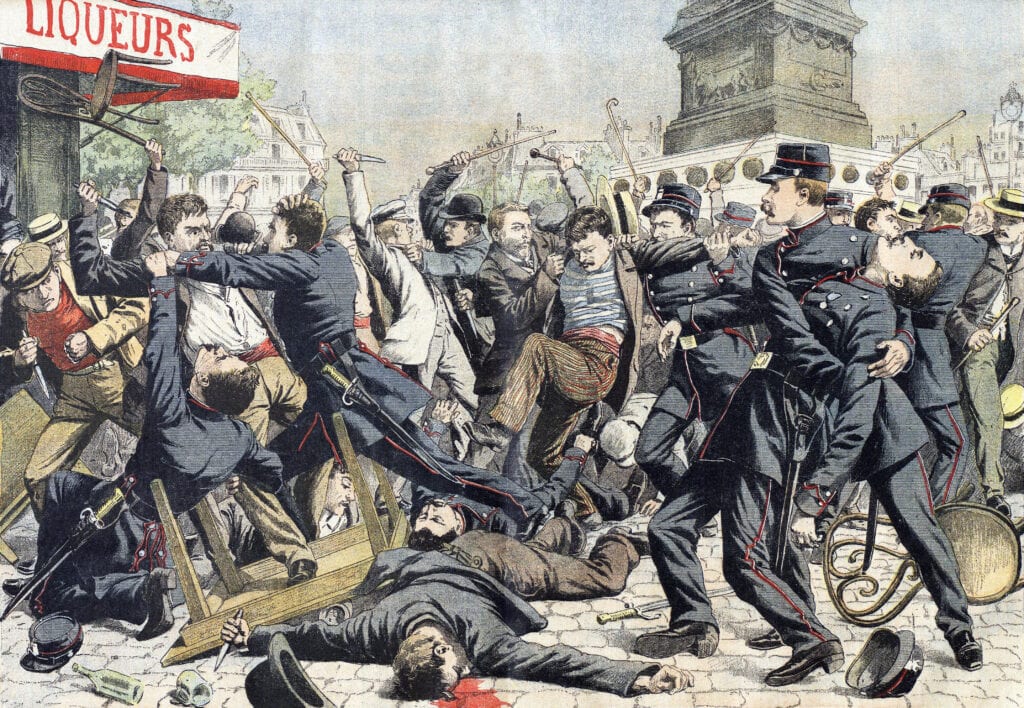
The Apaches gang was a criminal organization in Paris, France, during the late 19th century. The gang was formed in 1874 and was composed primarily of young men from the lower classes of Parisian society.
The Apaches gained notoriety for their violent tactics and involvement in various criminal activities, including robbery, theft, and assault. The gang members were known for their distinctive style, which included wearing flat caps, long overcoats, and tightly-fitted trousers.
Did You Know?
Apaches’ reign of terror was short-lived, and by the turn of the century, the gang had largely been disbanded. Many members had either been arrested or had moved on to other forms of criminal activity.
4. 40 Thieves
Year Established: 1825
Geographical Origin: New York, United States
Founder: Edward Coleman
Type of Gang: Criminal Street Gang
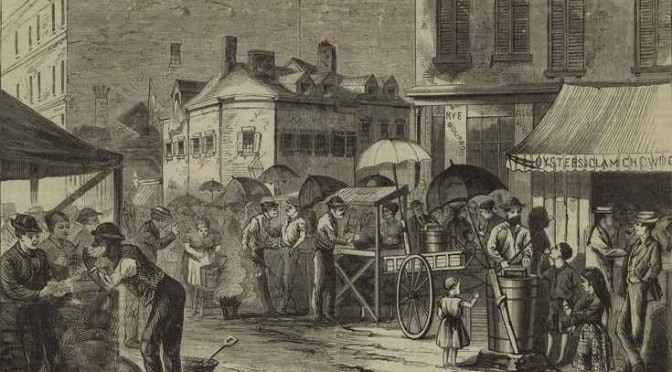
The 40 Thieves gang, also known as the Forty Elephants, was a notorious all-female crime organization in London, England, from the late 19th century until the mid-20th century.
The gang was founded by Alice Diamond in the 1870s and composed primarily of working-class women. The group’s name was derived from Ali Baba and the Forty Thieves, a story from the Arabian Nights, and its members were referred to as “elephants.”
The 40 Thieves engaged in various criminal activities, including shoplifting, pickpocketing, and smuggling. They were particularly known for their involvement in the black market trade during World War II, which included the sale of stolen goods and the distribution of counterfeit ration coupons.
Did You Know?
The gang was notorious for its violence and was involved in numerous clashes with law enforcement over the years. Despite this, the group maintained control over its criminal operations, partly thanks to its tight-knit structure and code of loyalty.
3. The Sicilian Mafia
Year Established: early 1800s
Geographical Origin: Sicily, Italy
Founder: Unknown
Type of Gang: Independent Criminal
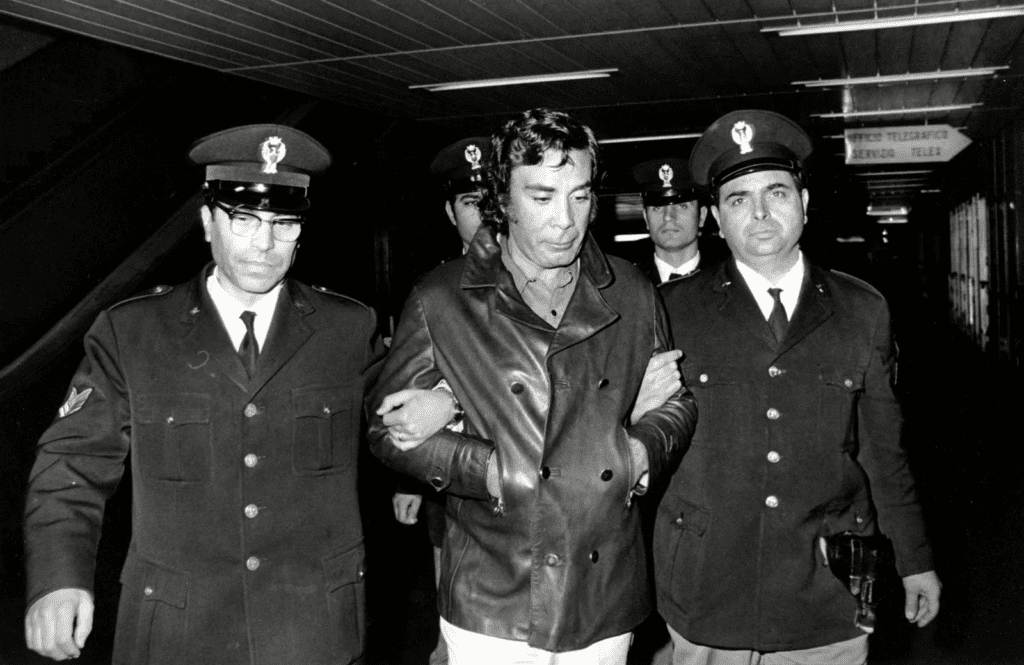
The Sicilian Mafia, also known as Cosa Nostra, is one of the world’s oldest and most notorious criminal organizations. It originated in the mid-19th century in Sicily, Italy, and has since expanded its reach globally, including the United States.
In the early 20th century, the Mafia established a foothold in the United States, with New York City becoming a major hub for their criminal activities. The organization engaged in illegal activities, including extortion, gambling, prostitution, loan-sharking, and drug trafficking.
The Mafia’s power and influence grew throughout the mid-20th century, with the organization expanding its operations to other parts of the United States and Europe. However, it faced significant setbacks, including increased law enforcement efforts and internal conflicts.
Did You Know?
In the 1980s and 1990s, the Mafia faced a series of high-profile prosecutions, including the “Maxi Trial” in Italy, which led to the imprisonment of hundreds of Mafia members. These prosecutions dealt a significant blow to the organization’s power and influence.
2. The Triads
Year Established: 1760s
Geographical Origin: Hong Kong, Macau, and Taiwan
Founder: Unknown
Type of Gang: Criminal Group
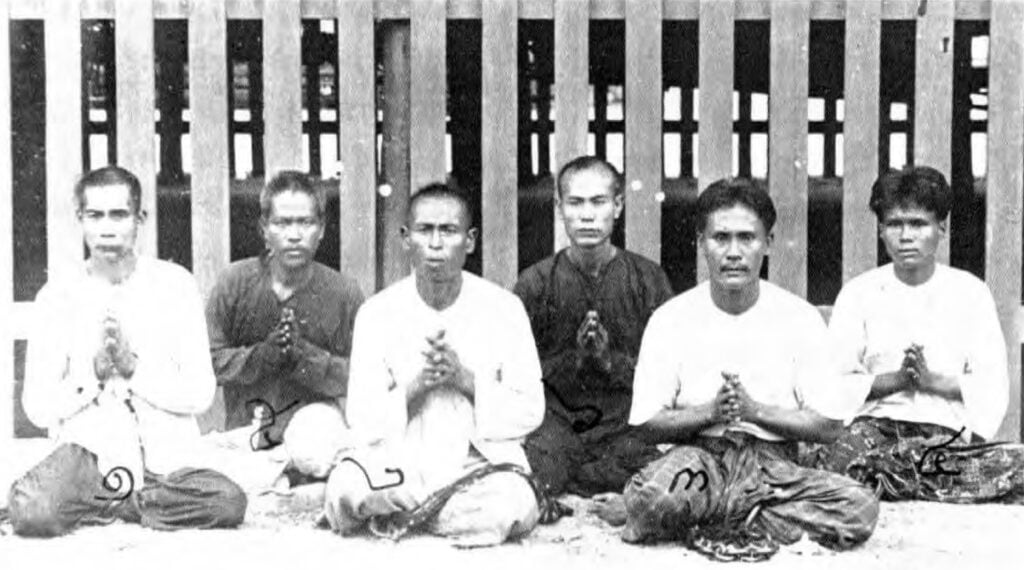
The Triads, also known as the Chinese Triad gang, is a criminal group that originated in the 1760s in Hong Kong, Macau, and Taiwan. The group’s complex history dates back to ancient China, where monks used martial arts to defend themselves against oppression.
The Triads were later involved in various criminal activities, including drug trafficking, human trafficking, extortion, and money laundering. They have a hierarchical structure with three levels: the upper level consisting of the leaders or “dragonheads,” the middle level consisting of the enforcers or “red poles,” and the lower level consisting of the foot soldiers or “associates.”
Did You Know?
The Triads have a strict code of conduct and a series of initiation rituals, including blood oaths and tattoos, which make it difficult for law enforcement agencies to infiltrate the group.
1. The Yakuza
Year Established: 1612
Geographical Origin: Japan
Founder: Unknown
Type of Gang: Criminal Group
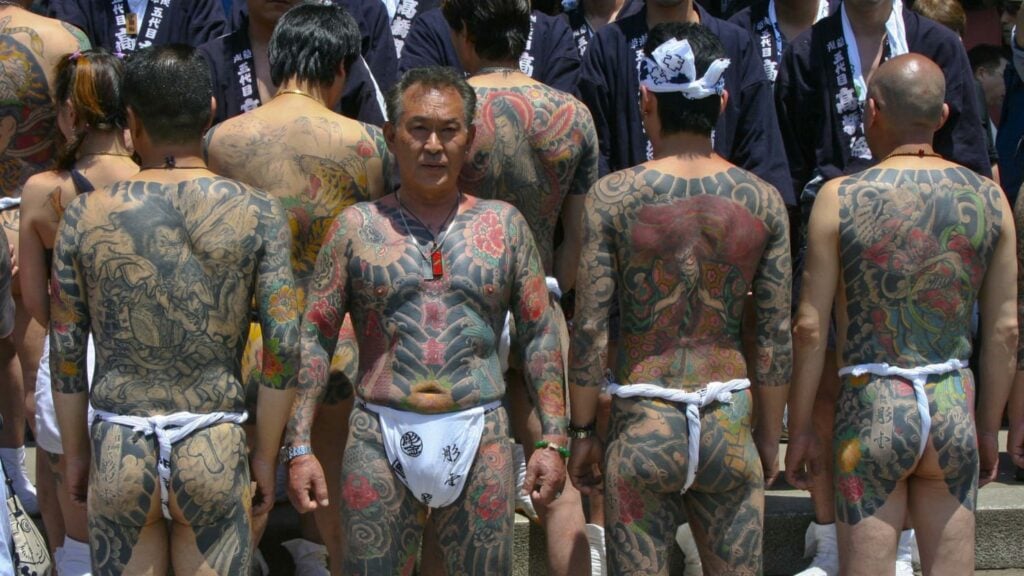
The Yakuza is a Japanese organized crime syndicate with a long and storied history dating back to the 17th century. As such, it is widely considered the oldest gang in the world, with a legacy spanning several centuries.
The origins of the Yakuza can be traced back to the Edo period, which lasted from 1603 to 1868. During this time, Japan was ruled by the Tokugawa shogunate, a feudal government that enforced strict social hierarchies and codes of conduct. In this environment, various criminal organizations emerged, often consisting of outcasts and rebels who flouted the established social order.
Over the years, the Yakuza has been involved in various criminal activities, including gambling, extortion, prostitution, and drug trafficking. Despite attempts by the Japanese government to crack down on organized crime, the Yakuza has remained a powerful force in Japanese society, with an estimated 30,000 members and billions of dollars in annual revenue.
Did You Know?
The Yakuza have a unique cultural identity and code of conduct known as the “yakuza way.” This code emphasizes loyalty, honor, and respect and is steeped in traditional Japanese values and customs.











